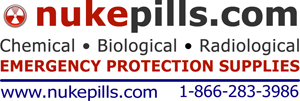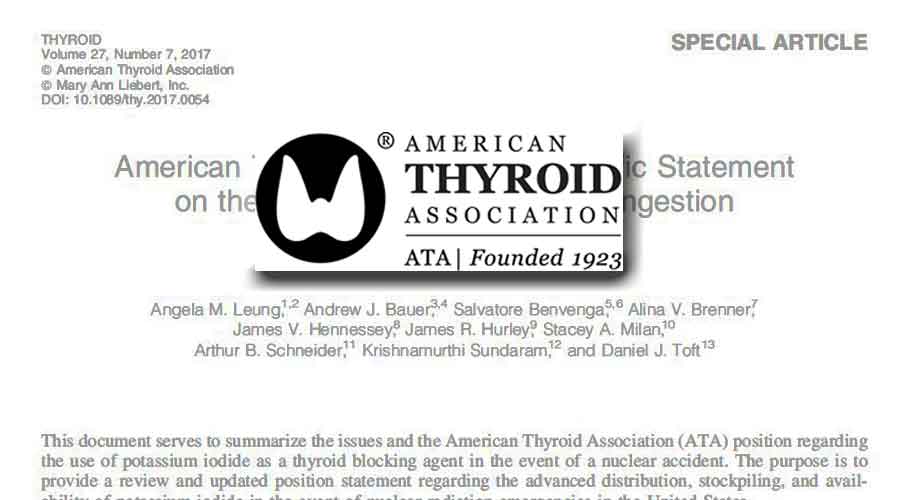ATA – NOV 7, 2017 – The American Thyroid Association (ATA) has long been an advocate for the use of potassium iodide (KI) as a thyroid blocking agent in the event of a nuclear accident (1). In 2002, the ATA issued a statement on the use of KI in the event of a nuclear power plant accident that was co-endorsed by the American Association of Clinical Endocrinologists, the Lawson Wilkins Pediatric Endocrine Society, and the Thyroid Foundation of America (2). Since then, there are new data in the aftermath of the release of radioactive iodine (131I) from the Fukushima nuclear reactors (3); the National Academy of Sciences’ 2004 report on KI use (4); evolving policies in the United States and internationally; and many peer reviewed publications (5), including updated data from the Chernobyl accident.
In this statement, ‘‘predistribution’’ is referred to as the supply of KI directly to individuals in the general population within a defined area surrounding an operating nuclear power plant. Presumably, in all cases, KI will also be available (i.e., stockpiled) within the same area. ‘‘Stockpiling’’ is defined as the availability of KI at key locations sufficient to protect the local population, such as schools, hospitals, clinics, post offices, pharmacies, and police and fire stations within a larger defined area around an operating nuclear facility. Included in this term is inclusion of KI in the U.S. Public Health Emergency Medical Countermeasures Enterprise (PHEMCE) (6) and similar programs.

